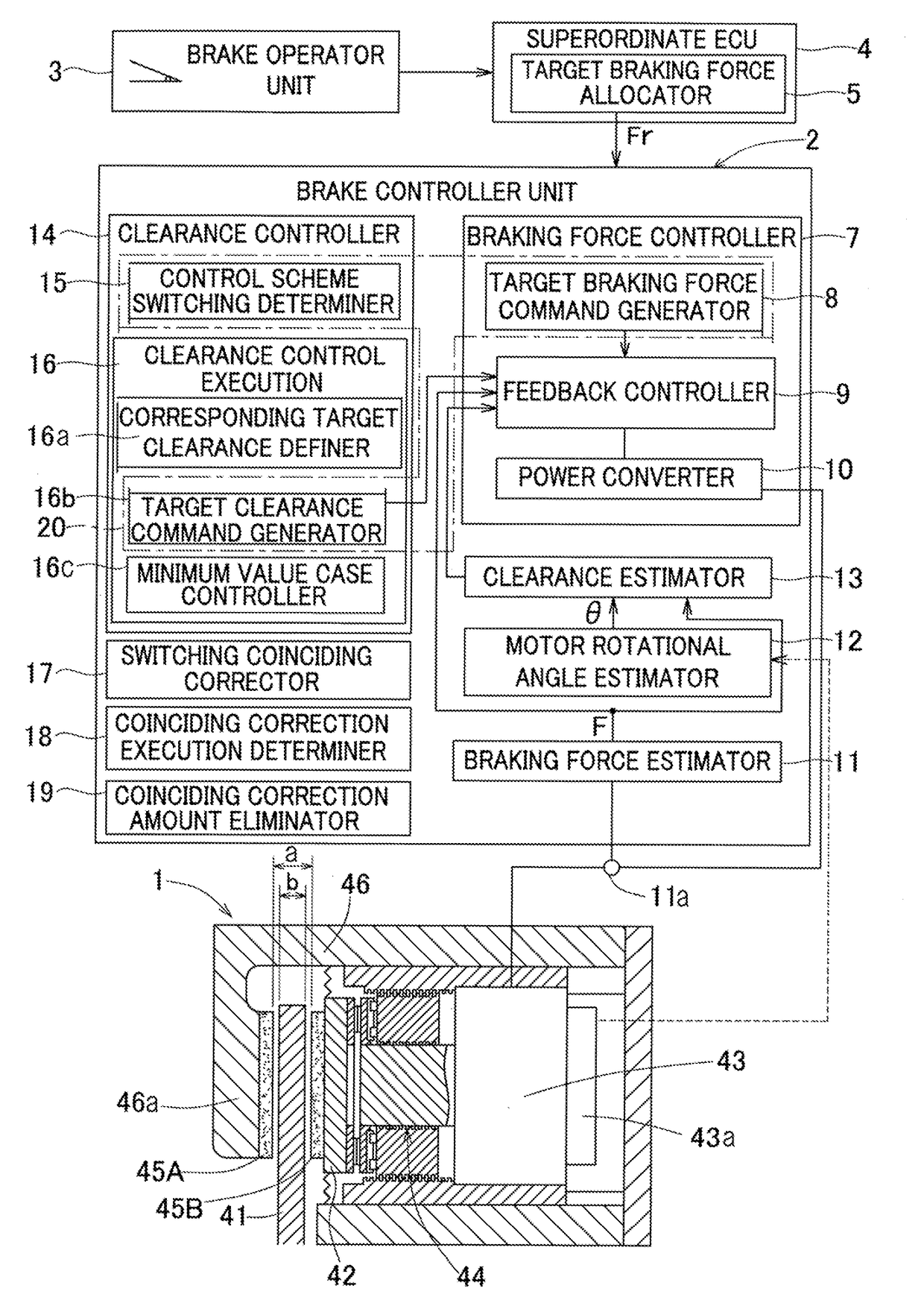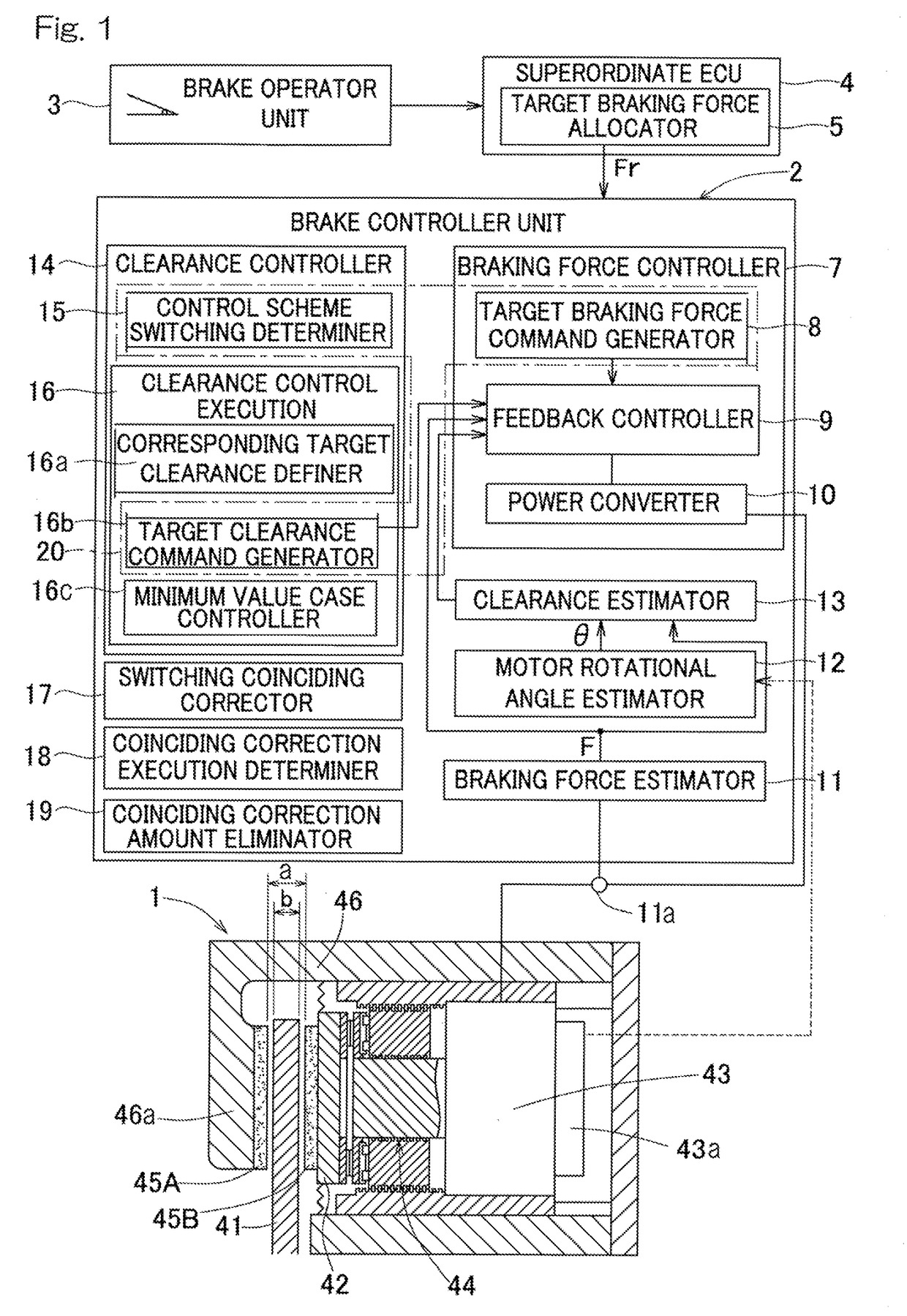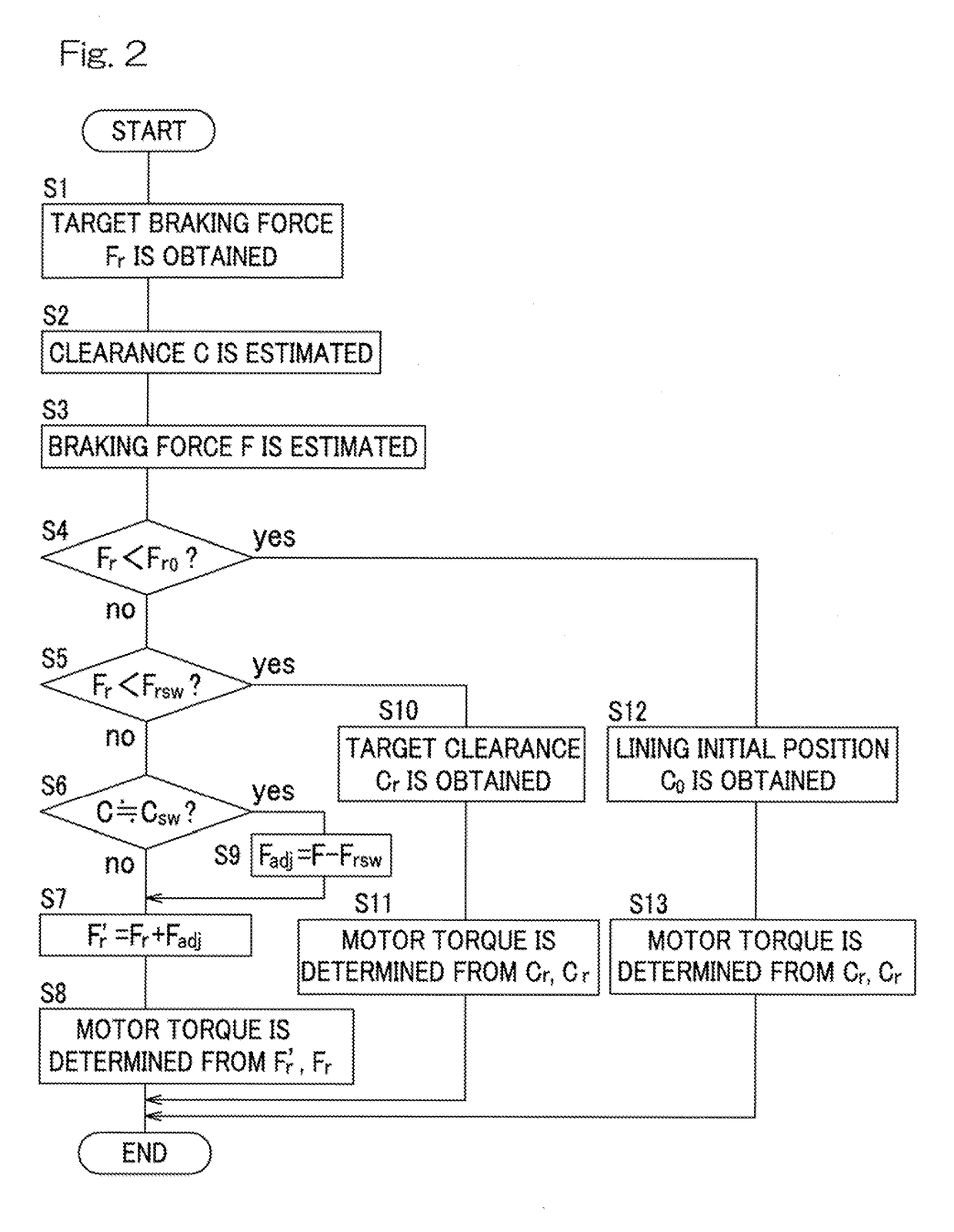Electric brake device
a technology of brake device and electric brake, which is applied in the direction of braking system, automatic initiation, transportation and packaging, etc., can solve the problems of difficult to accurately detect extremely small loads, difficult to estimate particular braking force, and deterioration of brake feeling, so as to achieve rapid change of braking force, rapid increase of braking force, and possible discrepancy of braking force
- Summary
- Abstract
- Description
- Claims
- Application Information
AI Technical Summary
Benefits of technology
Problems solved by technology
Method used
Image
Examples
Embodiment Construction
[0046]Embodiments of the present invention will now be described with reference to FIGS. 1 to 5. The illustrated electric brake device is intended to be employed for braking a wheel of a vehicle such as an automotive vehicle and may be formed by a brake main unit 1 which is a mechanical unit and a brake controller unit 2 which controls the brake main unit 1.
[0047]The brake main unit 1 may include a brake rotor 41 configured to rotate with the wheel, a frictional material mount 42, an electric motor 43, and a motion converter mechanism 44 configured to convert a rotary driving force of the motor 43 into a motion of the frictional material mount 42 in a direction towards or away from the brake rotor 41. The brake main unit 1 may be of a disc brake type in which the disc-shaped brake rotor 41 is intended to be clamped between a frictional material 45A mounted to a pawl portion 46a at a free end of a brake caliper 46 and a frictional material 45B mounted to the frictional material mount...
PUM
 Login to View More
Login to View More Abstract
Description
Claims
Application Information
 Login to View More
Login to View More - R&D
- Intellectual Property
- Life Sciences
- Materials
- Tech Scout
- Unparalleled Data Quality
- Higher Quality Content
- 60% Fewer Hallucinations
Browse by: Latest US Patents, China's latest patents, Technical Efficacy Thesaurus, Application Domain, Technology Topic, Popular Technical Reports.
© 2025 PatSnap. All rights reserved.Legal|Privacy policy|Modern Slavery Act Transparency Statement|Sitemap|About US| Contact US: help@patsnap.com



